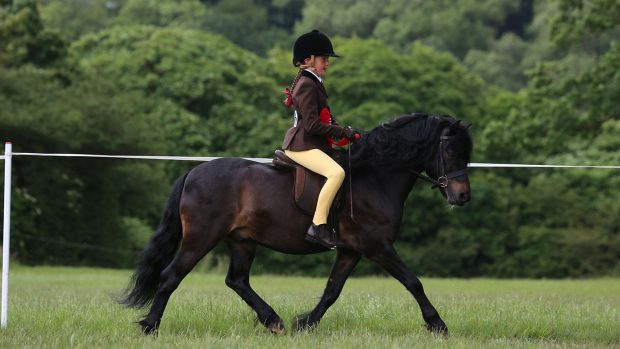Mountain & Moorland ridden classes
- Bridles should be plain and workmanlike.
- Plain browband – metal or clincher are permitted but some judges don’t like them (NB: brass was traditionally for stallions)
- Either no numnah or one which is discreet and matches the horse and saddle
- No boots or bandages
- Brown or black tack – brown is preferred by traditional judges and is always correct in the show ring
- Snaffle bridle for novice classes
- Double bridle or pelham for open classes
- Straight cut or working hunter saddles show more of the horse’s shoulder and movement, so are preferable to GP saddles
- Manes, tails and feathers may be pulled/trimmed in some breeds, according to the breed society’s specifications
- Quarter markers are not correct for native ponies
In-hand classes
- White halter or rope halter is correct for:
- New Forest
- Highland (rope not webbing)
- Fell
- Dales
- Welsh A, C & D
- Youngstock – mares & geldings of any age
- Leather foal slips, followed by in-hand bridles are correct for:
- Shetlands
- Connemaras
- Exmoors
- Dartmoors
- Welsh Bs
- In-hand bridles can be used for youngstock and broodmares
- Pony that compete in ridden classes can wear riding bridles with normal reins or in-hand bridles with couplings. Novice ponies should wear a snaffle. Open ponies a pelham or double bridle. NB: It is not correct to wear a riding bridle with a coupling and lead
- Stallions should wear bridles with bits once they are over two years
- Yearling colts can wear bits but are usually led off the noseband
- Two-year-olds can wear nylon (training) bits but once they are 3 (esp large breeds) they are expected to wear proper stallion bits on an in-hand bridle. Small breeds often stick with a smaller bit so it does not draw attention away from the face
- Some breed societies state that stallion harnesses must be worn on horses over 3 years olds




